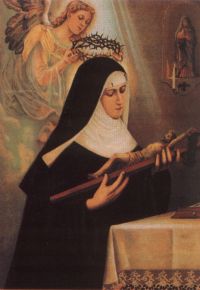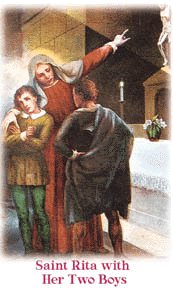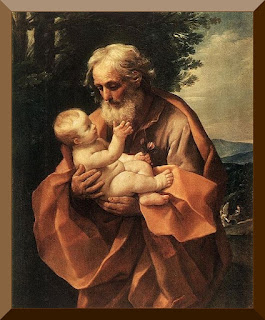Blessed
John Henry Newman, A Great Teacher and Catechist
During
the Year of the Faith convoked by Pope Benedict XVI we can draw
inspiration from great teachers and catechists. One of these was
Blessed John Henry Newman (1801-1890) who founded both a school for
boys and a university.
Today
Catholic parents are sometimes confronted with the dilemma of
choosing a school for either its catholic identity or for its
academic excellence and sports programs. This is a sad and
unacceptable dichotomy. As gifted educator and catechist, Newman paid
equal attention to educating the both intellect and the soul.
A
catechist is someone who teaches others the Faith while embodying the
beliefs and practices himself. The Greek word katecho
means to hold on to
or to teach.
A catechist is a person who holds on to what he has received and
transmits it faithfully to others (not only in word but by their
example). John Henry Newman was a true catechist. He knew the Faith
very well and taught it with great clarity and abundant examples.
Just as importantly, he did so with gentleness and charm. Newman
worked as a teacher and catechist at Oxford, Dublin and Birmingham.
Newman
studied at a boarding school just outside of London and then at
Trinity College, Oxford. Afterwards he became a tutor, what we call
an associate professor at the prestigious Oriel College, Oxford. He
soon had a following of students who looked up to him. Newman was
concerned not only with their intellectual life, but also with their
character formation and their spiritual life. When he became Roman
Catholic in 1845 some followed his footsteps; others had preceded
their teacher who was more cautious and deliberate.
During
his teaching time at Oxford Newman was pastor of St. Mary, the
University Church, and its chapel at Littlemore. Newman preached
hundreds of sermons on Christian life to the college students and
professors. Many of the sermons focused on the mysteries of Christ,
in His death and Resurrection, and the daily practice of following
Christ in prayer, sacrifice, and on the Christian virtues. Newman
also preached on the individual lessons that the Apostles and
Martyrs, exemplars of the Christian life, give us. As a good teacher,
Newman covered almost all the subjects of the Christian Faith.
Newman
developed his sermons from Sacred Scriptures and frequently quoted
it, explaining the figures of the Old Testament and resolving
apparent difficulties (between the Old Testament and New). He spoke
quietly from the pulpit of St. Mary's but with such depth and
conviction that (the congregation remained deathly silent). All ears
and eyes were on this teacher who was gentle and exacting at the same
time. Newman was teaching the listeners and helping them to lead
virtuous lives.
In
addition to caring for the intellect and the spirit, Newman was
concerned for the physical needs of his students, old and young. At
Littlemore there was a Sunday school for children. Newman was
concerned with the children's hygiene and appearance. He asked his
sisters for advice on the girls' dress, and bought them aprons. He
arranged for the children to learn how to sing religious hymns, and
rehearsed with them. He installed beautiful stained glass windows in
the little church at Littlemore which helped those attending to give
fitting praise to God.
Once
he became a Roman Catholic on October 9, 1845, founded the English
Oratory of St. Philip Neri in Birmingham through which he aspired to
be of service in the education of many youth. In 1852, while
directing the Oratory, he began one of the most important and
difficult projects of his life: the founding of the Catholic
University of Ireland. At the petition of the Irish bishops he
prepared study plans, hired professors and sought students. He was
the founder, rector, administrator, fundraiser, and builder, all in
one.
Newman
had the extraordinary vision of university education as formation of
both the mind and character. He explained the need for theology
studies for a university to aspire to universal learning (comprising
all learning, not just some spheres of learning). And he indicated
what the usurpation of theology in a university would do for
learning; the place of theology would be falsely occupied by another
science. He extolled the value of knowledge for knowledge's sake.
Newman transmitted these ideas in various lectures before the actual
opening of the University, and they were later published in his
seminal work, Idea
of a University. Newman
knew from his years at Oriel College that men need real mentors. He
established houses or residences in which the students would live
with a mentor who would take them under his wing. Students were
offered guidance in the proper exercise of their freedom.
Newman's
extraordinary work at Dublin was not well appreciated, and it was
hampered by the very ones who had asked him to carry it out. In 1858
he returned full time to his home at Birmingham. As a born educator,
however, he was anxious to communicate the truth, and soon undertook
another important work, the foundation of the Oratory School. At the
time the only secondary schools (or high schools) were the Protestant
public schools and some Catholic colleges. The public schools were
primarily for children from wealthy families. The few catholic
colleges were run by various religious orders such as the
Benedictines and the Jesuits. In the former there was a lack of
discipline and poor religious formation. In the latter, students who
were seminarians were mixed together with lay students, and the
education was not academically as rigorous as in the public schools.
Urged
on by his friends, Newman forged on with plans to start something
like a Catholic Eaton (Eaton being the premier English Public
School). He and his friends Edward Bellasis and James Hope-Scott
worked hard to secure the necessary funds, support, and students. (A
Catholic Eaton? Newman's Oratory School, Paul
Shrimpton, Gracewing 2005). In May 1859 the school opened. Newman was
not the headmaster; he had appointed an Oratorian Father, Nicholas
Darnell to this role, but Newman was the inspiration and soul of the
school. His prestige drew the students and patrons. The school had
serious difficulties due to the faults of the headmaster, but Newman
was able to set it back on good track.
The
students were all boys. Newman made sure that the younger ones had
the care of a woman, and that the headmaster exercised appropriate
discipline. He insisted that the students receive both a good
religious education as well as a classical liberal arts education.
This was the very reason for the school, namely providing youth with
a complete human and spiritual formation. Their intellect should be
formed and they should learn piety. Running a school was a difficult
task, and Newman persevered in the endeavor. He participated in
school events, including arranging classical plays which the students
acted. Some famous persons were associated with the school. The poet
Gerard Manley Hopkins, whom Newman had received in the Church, was a
teacher (1867-1868) and Hilaire Belloc was a student in 1887.
Some
years later Belloc wrote: They
[the boys] were taught to be as free - as self-reliant and as free -
as any of the young Englishmen who were growing up around them in the
great public schools; but with it there was an atmosphere of healthy
religion, an unconstrained frequency in the approaching of the
Sacraments, a sincere faith and high code both of morals and of
honour, which appeared so natural and so native to the place, that it
would have been called spontaneous by anyone who did not know that
the founding of the school, its influence, and its spirit were due to
Cardinal Newman.
('John Henry
Cardinal Newman,' The
Lamp 39, 1890, pp.
138-139 quoted from A
Catholic Eaton? pp. 284-285).
Through
his entire life Newman led by example. He taught what he first
practiced, and people were drawn by that unassuming and committed
life. After many years of teaching university students, and a short
time teaching children at the Littlemore Sunday school, he ended
teaching boys at Birmingham Oratory School. He was an educator and a
catechist all his life. Those who knew him felt his affection and
influence. Thus, Cardinal Newman's knowledge of the faith was lived
and transmitted to others with the gentle persuasion of the truth. He
truly was a great teacher, catechist, and mentor.
Fr,
Juan R. Vélez,
author of Passion
for Truth, the Life of John Henry Newman (TAN/St.
Benedict's, 2012)
Note:
This guest post was graciously written by Father Juan R. Vélez, author of "Passion for Truth, The Life of John Henry Newman". Father Vélez is a priest of the Prelature of Opus Dei who resides in San Francisco. He holds a doctorate in dogmatic theology from the University of Navarre. His doctoral thesis was on John Henry Newman’s Eschatology.
His interest in the life and works of Cardinal Newman began with his doctoral studies under Prof. José Morales, author of John Henry Newman (1801-1890).
Fr. Vélez has a medical degree, also from the University of Navarre, and was previously board certified in internal medicine.








